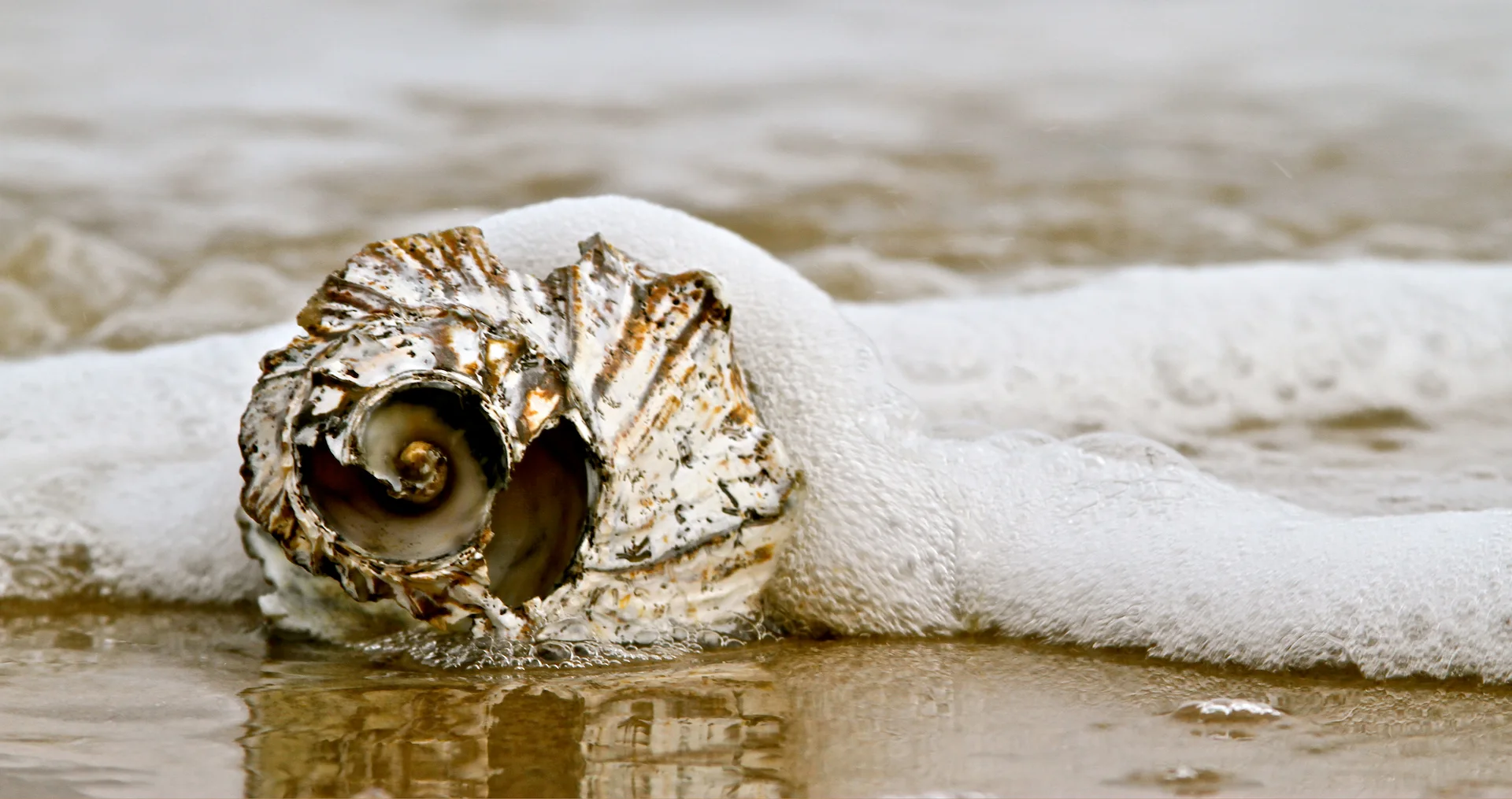What is Sea Foam?
No, it’s not a mermaid’s cappuccino

The term “sea foam” reminds me of two things: when I convinced my parents to let me paint my childhood bedroom “sea foam” green and the gruesome ending of Hans Christian Anderson’s original story of The Little Mermaid. Arguably, sea foam, or spume, is one of the least memorable things about an average trip to the beach. But occasionally, when the shore gets extra foamy, I can’t help but wonder—what is sea foam really made of? The answer is surprisingly simple.
Sea foam is a natural substance borne from a combination of decomposing organic matter and agitation, (i.e., decaying plants meet waves and wind). These little bits of “stuff” in ocean waters are made up of salts, fats, proteins, algae, plankton, bacteria and more. These act as a surfactant, or surface-acting agent, which reduces tension on water molecules, creating bubbles. Another popular foaming substance—soap—is also a surfactant. Imagine if your local barista were to froth a bit of ocean water, instead of milk, for your cappuccino. While I don’t think that will be the next seasonal craze at your local coffee house, essentially that’s how sea foam is created, except ocean water is being whisked by the agitation from the wind at the surface of the water.
Get Ocean Updates in Your Inbox
Sign up with your email and never miss an update.
The differences in sea foam density and proliferation depend on the concentration and type of organic matter and the intensity of the agitation, which varies by region and season. This is why you’re more likely to see sea foam in areas with more algal and phytoplankton blooms—or other organic matter in the water—or after a major storm or hurricane. In cases of extreme weather, sea foam can actually render a beach invisible, as in this case from Australia in 2020, or when sea foam swamped the coast of Tossa de Mar in Spain during Storm Gloria. And in some cases, sea foam just provides a good time on the beach—as in Argentina in February 2021.
Generally, sea foam is harmless (albeit loaded with bacteria), but there are instances where sea foam can be dangerous. In cases where the water itself has a higher concentration of toxins, sea foam can pose a larger threat. If there are toxic algal blooms, like red tide, or man-made contaminants, like pesticides or detergents in the water, those toxins are contained within the bubbles of sea foam. When those bubbles pop, the toxins can become airborne and compromise the air that is breathed in that location.
In large quantities, the foam can present a visibility hazard, hiding marine debris that could cause physical injury. It can also make an escape difficult if the foam rises too high or is accompanied by rough seas. In May 2020, five surfers in the Netherlands lost their lives during such conditions. Another danger related to sea foam is not the foam itself but what could be lurking beneath. In Australia, there were reports of venomous sea snakes beneath the massive sea foam—apparently, they like the bubbles.
Sea foam is there to enjoy—but to take care as well. With climate change increasing the intensity and frequency of storms, we could see more extreme sea foam events in the future. It’s up to us to research how climate change will affect our ocean—and develop sustainable, ocean-based climate solutions. Learn more about our climate action at Ocean Conservancy.